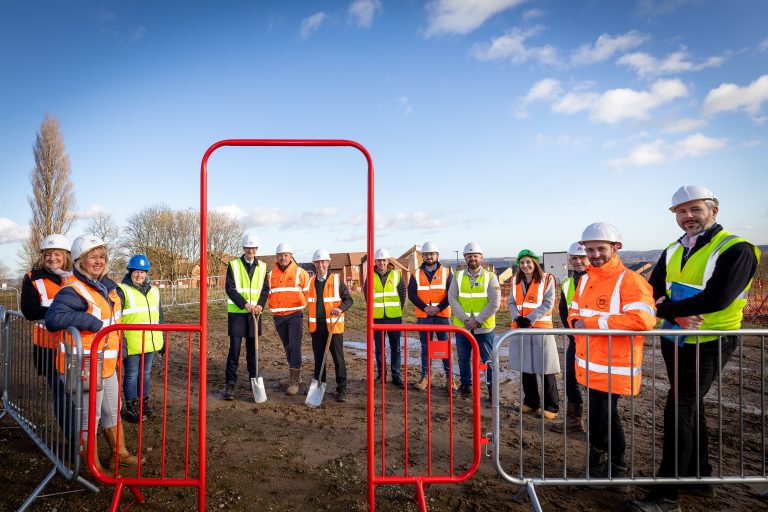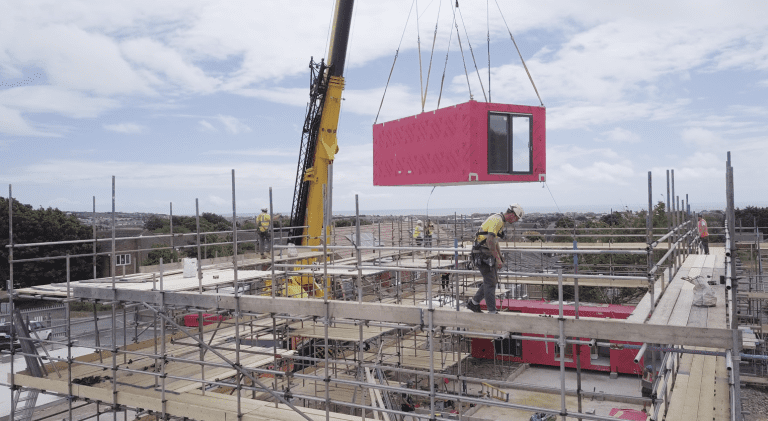Construction begins to build the UK’s largest purpose- built village for rough sleepers Once complete, Embassy Village will transform the site below 22 railway arches into accommodation for 40 homeless men with a village hall, outdoor green spaces, mini allotments and a multi-use sports area. The team behind a pioneering homelessness project in Manchester city centre have come together to celebrate a significant milestone moment as work starts on site to build Embassy Village. The purpose-built community for the homeless will provide a long-term and sustainable solution to help address the challenges around the growing number of homeless and vulnerable men within the city region. In 2021 Greater Manchester-based charity, Embassy, joined forces with a pro-bono team led by developers Peel Waters – part of The Peel Group and Capital&Centric, alongside the city’s business community to bring forward Embassy Village and provide 40 new purpose-built homes with wrap-around support for those who need it most. Once complete, Embassy Village will transform the site below 22 railway arches which has been provided by Peel Waters, into high-quality homes with communal outdoor green spaces, including mini allotments to grow vegetables and a multi-use sports area. Embassy will be responsible for the management and operation of Embassy Village. The Greater Manchester based charity launched in 2019 and specialises in reintegrating people back into society, breaking the cycle of homelessness by providing a home, skills training and wraparound support to give them the life skills to be independent. Embassy Village will not be a homeless shelter but will instead be a purpose-built community in which residents will have to commit to six hours of training per week in shopping, cooking and budgeting. The village hall within Embassy Village will be complete with a counselling room, laundry room and communal computers, plus a training kitchen to help residents learn to cook. Since planning consent was granted in 2021, Embassy and partners have been focused on fundraising. Through a £3.5million donation from the Moulding Foundation and further substantial donations from the Garfield Weston Foundation and Benefact Trust, the first phase of the village can now begin which will include the village hall, completion of 24 homes and staff accommodation. Vermont Construction Group has been appointed to build the scheme for no profit and expect to complete phase one of Embassy Village by late 2025. James Whittaker, Managing Director of Peel Waters, Tim Heatley, co-founder at Capital&Centric, and Sid Williams the Co-Founder and Director of Embassy marked the start on site at a special event with the organisations who have offered their services for free to design and plan Embassy Village. James Whittaker, Managing Director of Peel Waters said: “Starting the build of Embassy Village is a very significant moment for us and our partners who have worked on this meaningful project. “From forming the initial concept of using our land for the most vulnerable in our society during a breakfast with Mayor Andy Burnham, to pulling together the huge team of consultants working on a pro bono basis, we are extremely proud of our involvement and continuous support of this amazing project. “Today’s launch event is an important milestone, marking years of hard work and collaboration to deliver the UK’s first purpose-built community village and we want to say a huge thanks to all those who have got involved in supporting Embassy Village so far. “We look forward to completing the build of Embassy Village and seeing the first residents move in, providing much needed housing, training and wrap-around support for some of our most vulnerable members of society; transforming their lives and breaking the cycle of homelessness.” Tim Heatley, co-founder at Capital&Centric and Chair of the Greater Manchester Mayor’s Charity added: “Initiatives such as this show how big things can happen when the people and businesses of Greater Manchester come together. A city is judged on how it looks after its most vulnerable and disadvantaged residents and once again our city region is leading the way. Nobody should have to spend a night on our streets, and this project will ensure hundreds of people will have somewhere to call home, with the help and support needed to ensure they don’t end up homeless in the future.” Mark Connor, Founder and CEO of Vermont Group also added: “Being able to commence the Embassy Village today is such an achievement. Homelessness is a huge issue in Manchester as the city has some of the highest numbers of rough sleepers in the country. We all have a collective responsibility to deal with this issue and our work at Embassy Village doesn’t just set out to offer warm homes and a village hall, but to create a real community and support system for people who need it. It’s a huge honour for Vermont to be part of solution in dealing with this issue and watching Embassy Village come to life.” A further £1million is required for the remaining units and to complete phase two of Embassy Village. Embassy is now working with the business community, individuals and the Greater Manchester Mayor’s Charity to secure funds for the long-term village running costs. Sid Williams, Co-Founder and Director of Embassy said: “Buying an A-lister tour bus to house homeless people seemed a big vision when we started, and yet here we are not so long later at the start of building an entire village. We couldn’t have done this without the incredible companies, individuals and trusts who have given their support to the project and believed in our vision. “Special thanks go to Matt and Jodie Moulding for their significant financial backing and the teams at Peel Waters, Capital&Centric, the Mayor’s Charity and Manchester City Council for making this happen. Whilst this is a huge moment for the project, the hard work doesn’t stop there and we still need further funds to complete all 40 homes and for the long-term running costs. If you can help by sponsoring a home or supplying materials please get in touch.” Jodie Moulding, Co-founder














